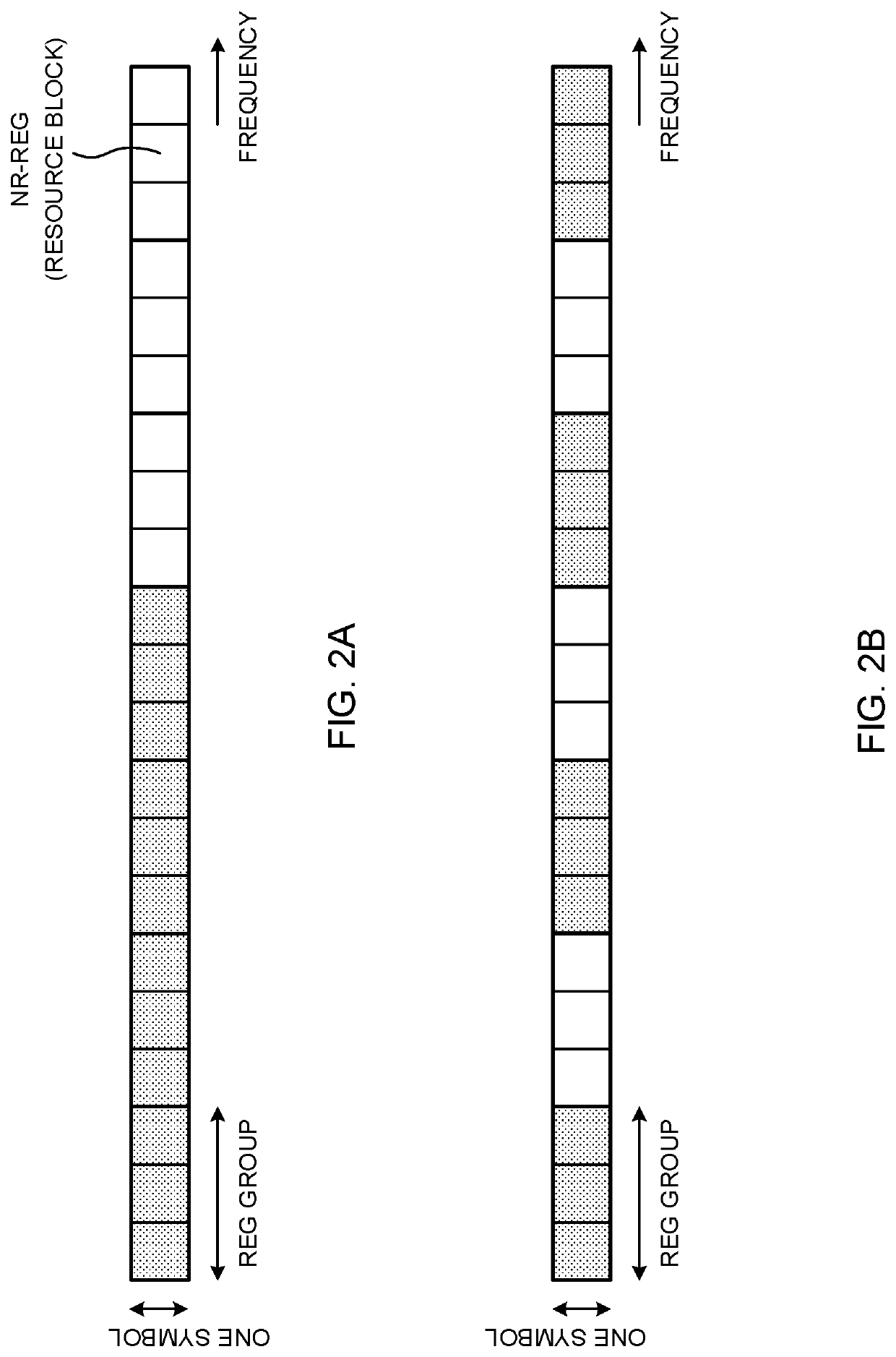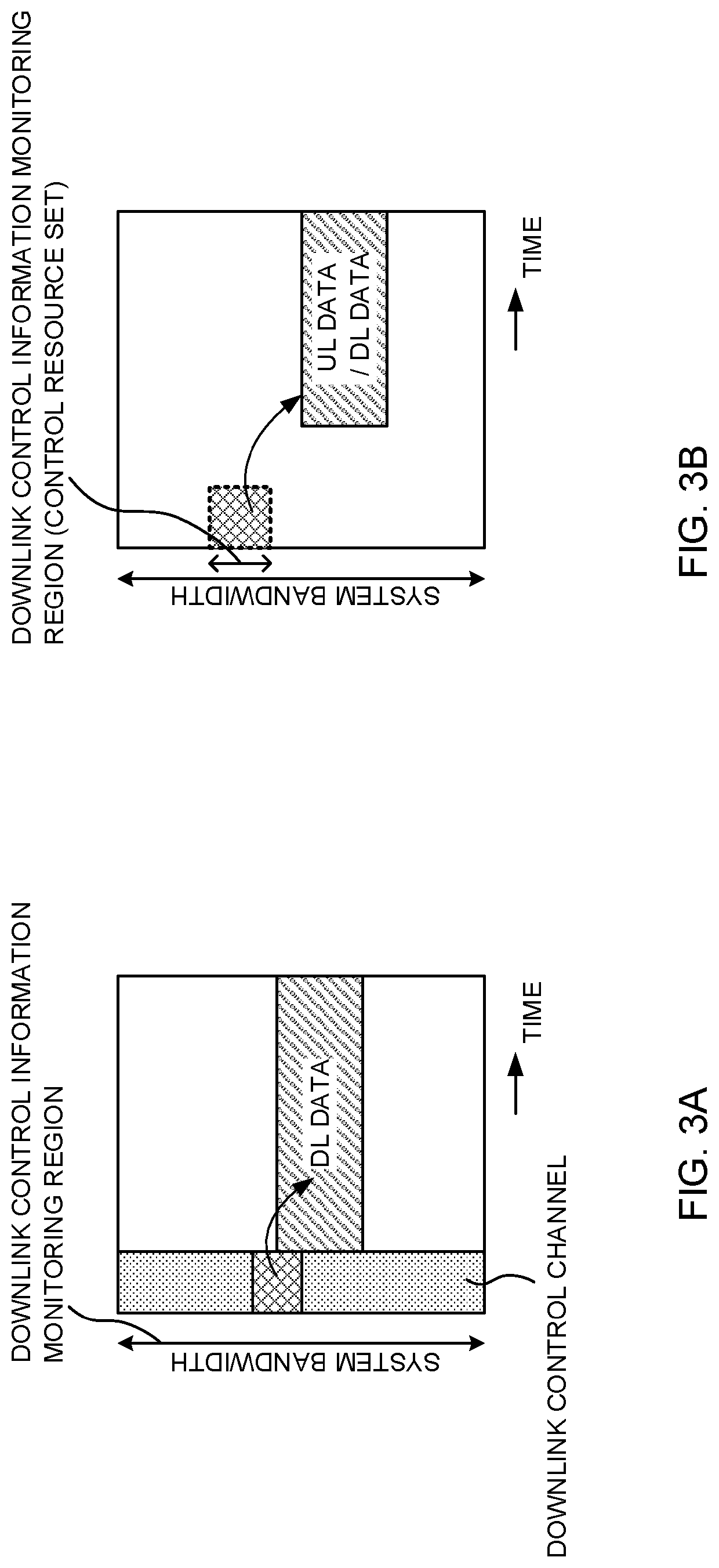User terminal and radio communication method
a radio communication and user terminal technology, applied in the direction of digital transmission, signal allocation, transmission path sub-channel allocation, etc., can solve problems such as the degradation of communication quality and/or throughput, and achieve the effect of reducing the deterioration of communication quality and so on
- Summary
- Abstract
- Description
- Claims
- Application Information
AI Technical Summary
Benefits of technology
Problems solved by technology
Method used
Image
Examples
first embodiment
[0072]According to a first embodiment of the present invention, an interleaver for distributed mapping is provided by operating (re-shaping) vectors of logical resource indices having a certain size.
[0073]In order to realize a distributed NR-PDCCH, one interleaver is used. The number of rows in an interleaver matrix is determined based on the total number of resource units in the maximum aggregation level (compatible with the maximum aggregation level). The number of columns in the interleaver matrix is determined based on the total number of resource units in one control resource set.
[0074]FIGS. 5A and 5B are diagrams to show an example of the interleaver according to the first embodiment. As shown in FIG. 5B, all resource indices corresponding to one control resource set, shown in FIG. 5A, are input in the interleaver matrix following the column-first rule (from the column direction first), and output from the interleaver matrix following the row-first rule (from the row direction...
second embodiment
[0092]In a second embodiment of the present invention, in addition to the interleaver of the first embodiment, permutation (rearrangement) of the elements of the interleaver matrix is used.
[0093]According to the first embodiment, when the AL is not the maximum AL, as in the cases shown in FIG. 6C and FIG. 7C where the AL is 2 and 4, DCI is not distributed over the entire control resource set, and the frequency diversity cannot be fully utilized. This is to prevent the offset between two adjoining logical resource units from becoming large in the output of the interleaver. As shown in FIG. 6A and FIG. 7A, the offset between two adjoining logical resource units is the length of rows (the number of columns) in the interleaver matrix. Also, the offset is the distance in the frequency domain.
[0094]In the second embodiment, inter-row permutation is performed in the interleaver matrix of the first embodiment to increase the frequency offset between two adjoining logical resource units. In ...
third embodiment
[0111]The interleaver according to a third embodiment of the present invention applies iterative operations to an interleaver matrix.
[0112]In order to achieve higher diversity, it is preferable to increase the offset between adjacent logical resource indices.
[0113]The offset between two adjoining resource units can be expanded by way of executing operations. Iterative operations can expand offset to the maximum possible extent.
[0114]FIGS. 10A to 10D are diagrams to show exemplary iterative operations.
[0115]When logical resource indices #1 to #32, shown in FIG. 10A, are input in an interleaver matrix where the length of rows (the number of rows) is long and the length of columns (the number of columns) is short, as shown in FIG. 10B, although the offset between adjoining logical resource indices #1 and #2 becomes large, the offset between next adjacent logical resource indices #1 and #3 remains small. As shown in FIG. 10C, by executing an operation on the matrix again, the offset bet...
PUM
 Login to View More
Login to View More Abstract
Description
Claims
Application Information
 Login to View More
Login to View More - R&D
- Intellectual Property
- Life Sciences
- Materials
- Tech Scout
- Unparalleled Data Quality
- Higher Quality Content
- 60% Fewer Hallucinations
Browse by: Latest US Patents, China's latest patents, Technical Efficacy Thesaurus, Application Domain, Technology Topic, Popular Technical Reports.
© 2025 PatSnap. All rights reserved.Legal|Privacy policy|Modern Slavery Act Transparency Statement|Sitemap|About US| Contact US: help@patsnap.com



